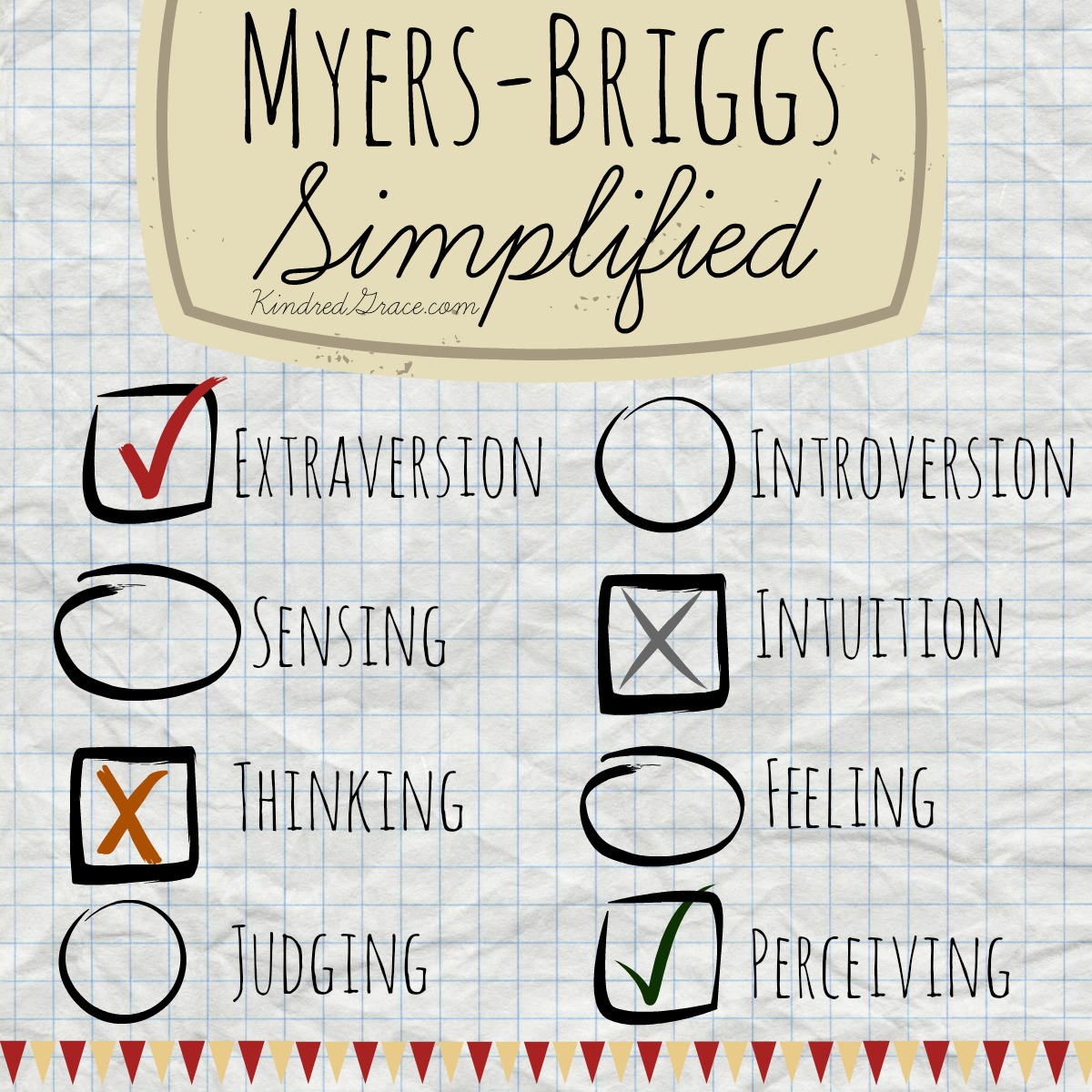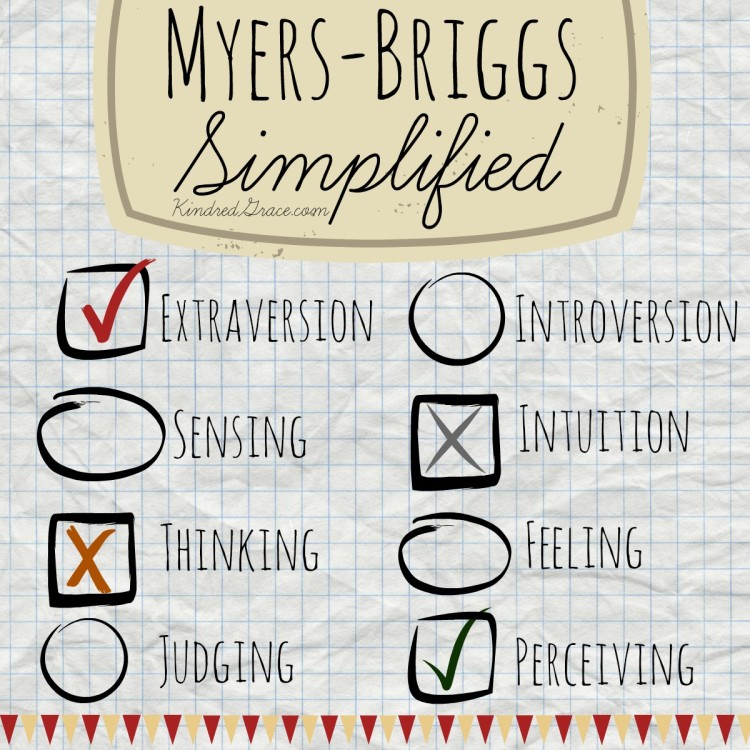An Overview of the Myers-Briggs Type Instrument
At first glance, the Myers-Briggs Type Instrument can be confusing. Sixteen different combinations of letters–how can you figure out who is what?
But when you break it down, the MBTI really only has four simple questions. The letter you choose in answer to each of the four questions makes up your MBTI type.
Entire books and lifetimes of study have been dedicated to this system of personality typing. But here, we’ve simplified the MBTI into a general overview.
The MBTI’s 4 Simple Questions
Extraversion (E) or Introversion (I)
What refreshes and revives you: being with people (E) or being alone (I)?
This isn’t about being outgoing or shy: both extroverts and introverts may sincerely enjoy being with other people. But introverts usually feel in need of time alone after being in a crowd, while being with people makes extroverts want to have another party.
In an airplane, an Extrovert turns a three hour flight into a party with the entire row, while an Introvert avoids the middle seat and pulls out a book as a defense against anyone who might want to start a conversation.
Sensing (S) or Intuition (N)
How do you process information: based on the information itself (S) or your own thoughts and interpretations about the information (N)?
Sensors are organized and logical, and often forget people in their practicality. Intuitives are the scatter-brained dreamers, and may need to be brought back down to earth.
In a rose garden, Sensors wonder what the watering system is and who is in charge of it, while the Intuitives are overwhelmed by the sight, smell, and feel of the roses.
Thinking (T) or Feeling (F)
How do you make decisions: do you focus on the cold, hard facts (T) or do you consider the people and situations involved (F)?
Thinkers will step back and critically analyze a situation before they make a decision. They want to be known for their accomplishments and decisions. Feelers tend to make their judgements based upon the emotions, feelings, and people associated with the decision. Feelers want to be appreciated.
As a manager, a Thinker would let an employee go to balance the budget, while a Feeler would cut anything to save the company, besides the people.
Judging (J) or Perceiving (P)
How do you organize your time: do you love to plan and be prepared (J), or do you like to be flexible in case something better comes along (P)?
Judgers are detailed and see things in black and white. They are viewed by others as task-oriented planners. Perceivers are flexible and adaptable in relationships and situations. The outside world sees them as people-oriented and relational.
The night before a big speech, a Judger is running through his outline and laying out the clothes he already had picked, while a Perceiver is madly jotting ideas down knowing he won’t get any sleep for speech writing.
Profiles of the MBTI Personality Types
Putting the four letter choices together forms the 16 different combinations we know as the MBTI:
- ESTJ: The Supervisor is practical and works hard at projects and routine details.
- ISTJ: The Inspector is thorough and wants to do their duty by everyone and everything.
- ESFJ: The Provider is the warmhearted hostess who facilitates community.
- ISFJ: The Protector defends what is right and stands guard over the weak.
- ESTP: The Promoter is the practical problem-solver.
- ISTP: The Crafter is a quiet observer of tactics, methods, and solutions.
- ESFP: The Performer loves to entertain people and have fun in life.
- ISFP: The Composer is quiet, sensitive, observant, and loyal.
- ENFJ: The Teacher is persuasive and informative in speech.
- INFJ: The Counselor is a conscientious people watcher.
- ENFP: The Champion is the advocate, the motivator.
- INFP: The Healer is a dreamer and idealist.
- ENTJ: The Fieldmarshal is a natural leader.
- INTJ: The Mastermind is the engineer and strategist who is always improving things.
- ENTP: The Inventor is always looking for a challenge.
- INTP: The Architect is the logical problem-solver.
And there you have it, the Myers-Briggs Type Instrument in a nutshell. But that’s just the beginning.
Type Dynamics: How the 4 MBTI Letters Function
The sixteen classifications of the Myers-Briggs Type Instrument leave room for many personality nuances we call type dynamics.
Mental Functions: The two middle letters describe what’s going on in your head.
External Attitudes: The first and last letters indicate which of the two mental functions you use to interact with the outside world.
Dominant and Auxiliary: One of your mental functions is dominant; the other one balances it out. If you are an Extrovert, the function that is seen by others is your dominant function. If you are an Introvert, the outside world is not likely to see the real you–so your auxiliary function is what others are likely to see.
Inside and Outside World: If the last letter is P, you use one of the perceiving (information-gathering) functions (S or N) with the outside world. If the last letter is J, you use a judging (decision-making) function (T or F) with those around you.
(This page contains affiliate links. Your clicks and purchases help support Kindred Grace at no extra charge to you.)
Confused yet? That’s why entire books have been written on this subject. Check out Type Talk by Otto Kroeger and Janet M. Thuesen or Please Understand Me II: Temperament, Character, Intelligence by David Keirsey and Marilyn Bates.
- For more links and resources on the sixteen personality type classifications, visit The 16 Personality Types.
- If the lines are blurred between two types, compare their attributes side by side with Prelude Character Analysis.
- For a free MBTI style test, take the Jung Typology Test or the Keirsey Temperament Sorter (KTS-II).
- For a brief history and a complete chart of equivalents of the type terms used by Myers-Briggs, Keirsey, Jung, and other brain typing instruments, visit The 16 Personality Types Equivalents and Comparisons.
Thanks to my friends ISFJ Vicki and INFP Elisabeth for helping this ESFJ simplify and clarify this post! And thanks to my INTP friend Melinda for showing us how simple the system is in the first place.



I just gathered info about this from internet tests and a bit of a look at the real site, so I could be wrong (do you have any free sites recommendations), but it seems as if you confused sensing and intuition. Even the words themselves seem to match better with immediacy and thoughtfulness (in that order). Again, I could be wrong, but I was just wondering, because it would affect my set if letters greatly (this was one of my definitely one or the other letters-one set I was really neither because the descriptions were too limited). I find all these personality posts fascinating. They inspired me to try to find my letters again and get my sister and mom to as well.
I agree that the words don’t seem to describe the types properly! But according to this page on the official Myers-Briggs website, the way it’s explained in this post is correct: http://www.myersbriggs.org/my-mbti-personality-type/mbti-basics/sensing-or-intuition.asp
We have lots of free tests and resource sites listed here: https://kindredgrace.com/16-personality-types/
Hope that helps. It is such a confusing typing system, but so much fun, regardless! 😉